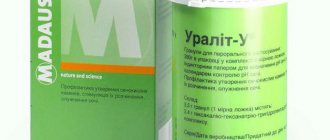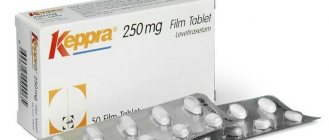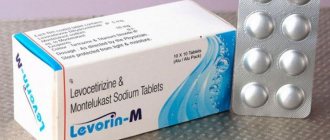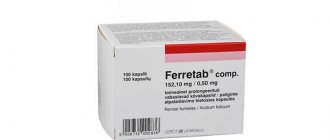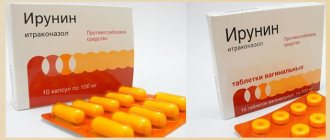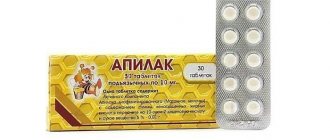Compound
One tablet contains trimethoprim (20 or 80 mg) and sulfamethoxazole (100 or 400 mg). The drug is available in various dosages, and therefore it must be selected in accordance with medical indications.
There are also additional components - croscarmellose sodium, potato starch and magnesium stearate.
“Co-trimoxazole”, the instructions for use of which will be studied further, is available in the form of a suspension. 5 ml of this product contains sulfamethoxazole (200 mg) and trimethoprim (40 mg).
Additionally, the composition includes water, methyl parahydroxybenzoate, polysorbate 80, propyl parahydroxybenzoate, dispersible cellulose, and flavoring.
Action
The drug in question is a combined antimicrobial agent that has a broad spectrum effect. Many people are interested in the question: is it an antibiotic or not? "Co-trimoxazole" consists of two components. And they are obtained synthetically, so traditionally it is not called an antibiotic, even though the medicine itself is an anti-bio drug - anti-infectious.
What about action? Sulfamethoxazole produces a bacteriostatic effect associated with inhibition of PABA utilization and subsequent disruption of the formation of dihydrofolic acid in pathogenic cells. And trimethoprim inhibits an enzyme involved in the metabolism of folic acid. What happens as a result? Dihydrofolate is converted to tetrahydrofolate.
In simple terms, Co-trimoxazole helps block two stages of the biosynthesis of purines and nucleic acids. But they are precisely what are necessary for the growth and subsequent reproduction of bacteria.
Pharmacokinetics
Co-trimoxazole is absorbed by 90%. The time during which the maximum concentration of the substance is reached in the body ranges from 1 to 4 hours. The therapeutic level of the active substance is maintained after a single dose for 7 hours.
The product is distributed well in the body. The active components penetrate everywhere - through the placental barrier, through the BBB, even into breast milk. In urine and lungs they reach concentrations that significantly exceed their content in plasma.
The smallest amount of active substances is observed in secretions from the prostate gland, bronchi, genital organs, middle ear, as well as in saliva, cerebrospinal fluid, bones, bile and interstitial fluid.
Sulfamethoxazole is bound to proteins by 66%, and trimethoprim by 45%. It is important to note that the active substances are metabolized to the greatest extent with the formation of acetylated derivatives.
The drug is excreted by the kidneys - 80% in the form of metabolites and 20% unchanged. It is important to note that drug residues do not have antibacterial activity.
Indications
Before moving on to studying the instructions for use of Co-trimoxazole, it is worth listing the conditions for which this drug is usually prescribed. Its use is justified if any of the following are diagnosed:
- Respiratory tract infections.
- Aggravated chronic bronchitis.
- Pneumocystis pneumonia (also prescribed for the prevention of this disease).
- Infections of the genitourinary organs without complications. Including those caused by highly sensitive strains.
- Infections affecting the gastrointestinal tract. Typically, these are traveler's diarrhea and shigellosis.
- Infections that affect the ENT organs, in particular acute otitis media.
In fact, if you make a detailed list, it will be much more impressive. Indications also include gastroenteritis, typhoid fever, sinusitis, tonsillitis, scarlet fever, gonorrhea, cholangitis, cholecystitis and dozens of other diseases.
But, be that as it may, the drug is still prescribed by the doctor after conducting a detailed examination of the patient and studying the results of laboratory tests. The drug may not be suitable for treating even the disease that is on the list if it was caused by a pathogen that is resistant to the active components of Co-trimoxazole.
Contraindications
There are quite a lot of them, which is why it is forbidden to start taking the drug in question without permission. Co-trimoxazole tablets and suspension should not be used for conditions such as:
- Hypersensitivity to the substances included in the composition.
- Exudative erythema multiforme.
- Immune thrombocytopenia (current or history). It does not matter what exactly it is induced by – trimethoprim and/or sulfonamides.
- Deficiency of a cytosolic enzyme known as glucose-6-phosphate dehydrogenase.
- Blood changes of a pathological nature. This may be megaloblastic anemia, granulocytopenia or thrombocytopenia.
- Lactation period.
- The use of dofetilide is a drug of the third class of antiarrhythmic drugs.
- Renal failure with creatinine clearance less than 15 ml/min. In this condition, it is usually simply impossible to assess the functional state of the paired organ and understand the concentrations of sulfamethoxazole and trimethoprim.
- Severe liver failure, jaundice, hepatitis and other parenchymal organ damage.
- Acute porphyria.
It is also prohibited to take Co-trimoxazole tablets for children under 2 years of age. The doctor can only give them a suspension. However, babies under the age of 2 months or up to 6 weeks (born from mothers with HIV infection) are not recommended to take the drug even in this form.
Of course, taking the drug during pregnancy is also prohibited, because its active components are very highly absorbable.
Co-trimoxazole-ICN
Inside, intravenously, intramuscularly. In each dosage form, the quantitative ratio of trimethoprim and sulfamethoxazole is 1:5.
Orally (tablets), adults and children over 12 years old - 960 mg once, or 480 mg 2 times a day. For severe infections - 480 mg 3 times a day; for chronic infections, a maintenance dose - 480 mg 2 times a day. Children 1-2 years old - 120 mg 2 times a day, 2-6 years old - 120-240 mg 2 times a day, 6-12 years old - 240-480 mg 2 times a day.
Suspension: children 3-6 months - 120 mg 2 times a day, 7 months-3 years - 120-240 mg 2 times a day, 4-6 years - 240-480 mg 2 times a day, 7-12 years - 480 mg 2 times a day, adults and children over 12 years old - 960 mg 2 times a day. Syrup for children: children 1-2 years old - 120 mg 2 times a day, 2-6 years old - 180-240 mg 2 times a day, 6-12 years old - 240-480 mg 2 times a day.
The minimum duration of treatment is 4 days; after the symptoms disappear, therapy is continued for 2 days. For chronic infections, the course of treatment is longer. For acute brucellosis - 3-4 weeks, for typhoid fever and paratyphoid fever - 1-3 months.
To prevent relapses of chronic urinary tract infections for adults and children over 12 years of age - 480 mg once a day at night, for children under 12 years of age - 12 mg/kg/day. Duration of treatment is 3-12 months. The course of treatment for acute cystitis in children 7-16 years old is 480 mg 2 times a day for 3 days.
For gonorrhea - 1920-2880 mg/day in 3 doses.
For gonorrheal pharyngitis (with hypersensitivity to penicillin) - 4320 mg 1 time per day for 5 days. For pneumonia caused by Pneumocystis carinii - 120 mg/kg/day with an interval of 6 hours for 14 days.
Parenteral: intramuscularly for adults and children over 12 years old - 480 mg every 12 hours, children 6-12 years old - 240 mg every 12 hours.
IV drip, adults and children over 12 years old - 960-1920 mg every 12 hours, children 6-12 years old - 480 mg 2 times a day; 6 months-5 years - 240 mg 2 times a day; 6 weeks-5 months - 120 mg 2 times a day.
To achieve maximum effectiveness, constant trimethoprim plasma or serum concentrations should be maintained at or above 5 mcg/mL.
Malaria caused by Plasmodium falciparum - intravenous infusion (1920 mg 2 times a day) for 2 days. Children will require a correspondingly reduced dose.
To achieve higher concentrations in the CSF, administer intravenously (dissolved in 200 ml of solvent) for 1 hour 2 times a day.
In case of renal failure, the dose depends on the value of CC: with CC over 25 ml/min - standard dose; at 15-25 ml/min - standard dose for 3 days, then half the standard dose. When CC is less than 15 ml/min, half the standard dose is prescribed only against the background of hemodialysis.
Dissolve in the following proportions immediately before administration: 480 mg (5 ml of solution for infusion) per 125 ml, 960 mg (10 ml) - per 250 ml, 1440 mg (15 ml) - per 500 ml of infusion solution.
If cloudiness or crystallization of the solution appears before or during infusion, the mixture cannot be used. The duration of administration is 1-1.5 hours (must be consistent with the patient’s fluid needs).
If it is necessary to limit the volume of injected liquid, it is administered in higher concentrations - 5 ml is dissolved in 50-75 ml of a 5% dextrose solution in water. For severe infections in all age groups, the dose can be increased by 50%.
Dosage
Having understood the indications for the use of Co-trimoxazole, we can move on to this topic. The dosage, however, is determined individually, depending on the personal characteristics of the patient.
On average, all patients over 12 years of age are prescribed 0.4 to 2 grams of the drug every 12 hours. The course of treatment can last from 5 to 14 days.
For younger children, the dosages are as follows:
- From 2 to 5 months - 100 mg twice a day.
- From six months to 5 years - 2 times a day, 200 mg.
- From 6 to 12 years - 400 mg twice a day.
For very young children, the dosage is selected based on their body weight, as well as taking into account the clinical situation.
If the doctor has prescribed injections rather than Co-trimoxazole tablets, then every 12 hours an adult patient needs to be administered the drug in an amount of 0.8 to 1.6 g. This treatment lasts 5 days. Then the patient is usually switched to tablets.
It is important to remember that the maximum daily dose of the drug is 3.6 g.
Directions for use and dosage
Co-trimoxazole is used orally.
Tablets for adults and adolescents over 12 years of age are recommended to be taken in a daily dose of 960 mg once or divided into two doses of 480 mg. In case of severe disease - 480 mg 3 times a day; for chronic infections, the maintenance dose is 480 mg 2 times a day.
For children, tablets are prescribed 2 times a day depending on age:
- 1-2 years – 120 mg;
- 2-6 years – 120-240 mg;
- 6-12 years – 240-480 mg.
Oral suspension for children is usually prescribed 2 times a day in the following doses:
- 3-6 months – 120 mg;
- 7 months-3 years – 120-240 mg;
- 4-6 years – 240-480 mg;
- 7-12 years – 480 mg;
- Adults and adolescents over 12 years of age – 960 mg.
The minimum course lasts 4 days; after the symptoms of the disease disappear, it is recommended to continue treatment for another two days. Treatment for chronic infections takes longer.
The course of treatment for acute brucellosis is 3-4 weeks, for typhoid and paratyphoid fever – 1-3 months.
To prevent relapses of chronic urinary tract infections, Co-trimoxazole is prescribed to adults and adolescents over 12 years of age once a day at night at a dose of 480 mg, for children under 12 years of age - 12 mg/kg/day. Course duration is 3-12 months.
In the treatment of acute cystitis, children and adolescents 7-16 years old take 480 mg 2 times a day for 3 days.
For gonorrhea – 1920-2880 mg/day in 3 doses.
For the treatment of gonorrheal pharyngitis (with hypersensitivity to penicillin) it is recommended to take 4320 mg once a day for 5 days.
For pneumonia initiated by Pneumocystis carinii - 120 mg/kg/day with an interval of 6 hours for 2 weeks.
Side effects
They arise if the patient begins to take the drug without permission or neglects medical recommendations. Here's what you'll have to deal with in this case:
- Gastrointestinal tract: cholestatic hepatitis, nausea, diarrhea, vomiting, pseudomembranous colitis and glossitis.
- Allergies: Quincke's edema, Lyell's or Stevens-Johnson syndromes, rash.
- Circulatory system: megaloblastic anemia, thrombocytopenia, leukopenia, agranulocytosis, neutropenia.
- Local reactions: phlebitis may occur with intravenous administration.
- Urinary system: interstitial nephritis, hematuria, crystalluria.
Other side effects include thyroid disorders and even purpura.
Side effects
- Nervous system: dizziness, headache; in some cases – depression, aseptic meningitis, tremor, apathy, peripheral neuritis;
- Digestive system: loss of appetite, vomiting, diarrhea, abdominal pain, nausea, gastritis, stomatitis, glossitis, cholestasis, hepatitis, increased activity of liver enzymes, hepatonecrosis, pseudomembranous enterocolitis;
- Respiratory system: bronchospasm, pulmonary infiltrates;
- Urinary system: interstitial nephritis, polyuria, renal dysfunction, hematuria, crystalluria, hypercreatininemia, increased urea concentration, toxic nephropathy with oliguria and anuria;
- Hematopoietic system: neutropenia, leukopenia, agranulocytosis, thrombocytopenia, megaloblastic anemia;
- Musculoskeletal system: myalgia, arthralgia;
- Allergic reactions: photosensitivity, rash, itching, exudative erythema multiforme (including Stevens-Johnson syndrome), exfoliative dermatitis, fever, toxic epidermal necrolysis, allergic myocarditis, scleral hyperemia, angioedema;
- Other: hypoglycemia.
Symptoms of an overdose of Co-trimoxazole are: intestinal colic, vomiting, nausea, headache, drowsiness, dizziness, confusion, fainting, depression, blurred vision, hematuria, fever, crystalluria; with long-term use of excessively high doses - leukopenia, thrombocytopenia, jaundice, megaloblastic anemia.
Treatment – gastric lavage, oral fluid intake, acidification of urine (helps increase trimethoprim excretion), intramuscular calcium folinate at a dose of 5-15 mg/day (eliminates the effect of trimethoprim on the bone marrow), hemodialysis (if necessary).
Use during pregnancy
As mentioned earlier, both active ingredients of the drug penetrate the placental barrier, which risks mixing these components with breast milk.
Of course, the use of Co-trimoxazole during pregnancy is contraindicated. Otherwise, consequences may occur in the form of hemolytic anemia and kernicterus in the unborn child. In this case, the woman herself is also at risk - she may encounter fatty infiltration of the liver.
A doctor can prescribe a medication in very rare cases - when its probable benefit may be higher than the possible risk, and only after childbirth. And then, during the therapy period, the woman will have to stop breastfeeding.
Drug interactions
The combination of antimicrobial sulfonamides and diuretics (including thiazides and furosemide) and oral hypoglycemic drugs (sulfonylureas) can lead to the development of a cross-allergic reaction.
Drug interactions with Co-trimoxazole:
- Indirect anticoagulants - anticoagulant activity increases, the effect of hypoglycemic drugs and methotrexate increases;
- Oral contraceptives - reliability decreases due to inhibition of intestinal microflora and a decrease in the enterohepatic circulation of hormonal compounds;
- Warfarin and phenytoin - the effect is enhanced by reducing the intensity of hepatic metabolism;
- Pyrimethamine in doses exceeding 25 mg per week increases the risk of megaloblastic anemia;
- Rifampicin – the half-life (T1/2) of trimethoprim is reduced;
- Benzocaine, procainamide, procaine - the effectiveness of Co-trimoxazole decreases;
- Diuretics (usually thiazides) – increases the risk of thrombocytopenia;
- Salicylic acid derivatives – increases the effectiveness of sulfonamides;
- Cholestyramine – absorption decreases, as a result of which its administration is recommended 1 hour after or 4-6 hours before the use of Co-trimoxazole;
- Barbiturates, phenytoin, PAS – the manifestation of folic acid deficiency increases;
- Drugs that have a depressing effect on bone marrow hematopoiesis increase the risk of myelosuppression.
Treatment for other disorders
The drug is used with caution if a person has liver-related pathologies. The medication is strictly prohibited if liver dysfunction is pronounced. The same goes for kidney diseases.
If the doctor nevertheless prescribed parenteral use of Co-trimoxazole to the patient, then he will have to measure the level of sulfamethoxazole in the blood plasma every 2-3 days before the next injection. Therapy is stopped immediately if concentrations above 150 mcg/ml are detected. Treatment may be resumed if the level drops to 120 mcg/ml.
Description of the drug KO-TRIMOXAZOL (KO-TRIMOKSAZOL)
With the simultaneous use of co-trimoxazole, the effect of indirect anticoagulants is significantly enhanced due to slower inactivation of the latter, as well as their release from plasma proteins.
When used simultaneously with some sulfonylurea derivatives, the hypoglycemic effect may be enhanced, which is associated with an increase in the concentration of the free fraction of co-trimoxazole.
The simultaneous use of co-trimoxazole and methotrexate may lead to increased toxicity of the latter (in particular, the appearance of pancytopenia) due to its release from plasma proteins.
Under the influence of butadione, indomethacin, naproxen, salicylates and some other NSAIDs, it is possible to enhance the action of co-trimoxazole with the development of undesirable effects, since the active substances are released from their binding to blood proteins and their concentration increases.
Concomitant use of diuretics and co-trimoxazole increases the likelihood of developing thrombocytopenia caused by the latter, especially in elderly patients.
In the case of simultaneous administration of chloridine with co-trimoxazole, the antimicrobial effect is enhanced, since chloridine inhibits the formation of tetrahydrofolic acid, necessary for the synthesis of nucleic acids and proteins. In turn, sulfonamides inhibit the formation of dihydrofolic acid, which is a precursor of tetrahydrofolic acid. This combination is widely used in the treatment of toxoplasmosis.
The absorption of sulfamethoxazole and trimethoprim when taken together with cholestyramine is reduced as a result of the formation of insoluble complexes, which leads to a decrease in their concentration in the blood.
Reduces the intensity of hepatic metabolism of phenytoin (extends its T1/2 by 39%), increasing its effect and toxic effect.
With simultaneous use of co-trimoxazole with pyrimethamine in doses exceeding 25 mg/week, the risk of developing megaloblastic anemia increases.
May increase serum digoxin concentrations, especially in elderly patients; monitoring of serum digoxin concentrations is necessary.
The effectiveness of tricyclic antidepressants when taken in combination with co-trimoxazole may be reduced.
Patients receiving co-trimoxazole and cyclosporine after kidney transplantation may experience a reversible deterioration in renal function, manifested by an increase in creatinine levels.
When used simultaneously with ACE inhibitors, especially in elderly patients, hyperkalemia may develop.
Trimethoprim, by inhibiting the renal transport system, increases the AUC of dofetilide by 103% and the Cmax of dofetilide by 93%. With increasing concentrations, dofetilide may cause ventricular arrhythmias with prolongation of the QT interval, including tachycardia. Simultaneous use is contraindicated.
special instructions
If treatment is prescribed to elderly patients, they are also prescribed folic acid in parallel. This is necessary to strengthen the immune system, since in adults the risk of developing adverse reactions increases.
Patients with folic acid deficiency should take Co-trimoxazole carefully. If a person is forced to carry out long-term treatment with the drug, he needs to systematically have peripheral blood tested, and also check the condition of his kidneys and liver.
Also, while taking Co-trimoxazole, you should drink a lot of clean drinking water. This will help avoid crystalluria.
Co-trimoxazole
Co-trimoxazole should be prescribed only in cases where the advantage of such combination therapy over other antibacterial monotherapy drugs outweighs the possible risk. Because the sensitivity of bacteria to antibacterial drugs in vitro varies across different geographic areas and over time, local patterns of bacterial susceptibility should be taken into account when selecting a drug.
Hypersensitivity and allergic reactions
: At the first appearance of skin rash or any other severe adverse reaction, the drug should be discontinued. Patients with a tendency to allergic reactions and bronchial asthma should be prescribed co-trimoxazole with caution.
Infiltrates in the lungs
(like eosinophilic or allergic alveolitis) may manifest symptoms such as cough or shortness of breath. If these symptoms appear or suddenly increase, it is necessary to re-examine the patient and consider stopping treatment with the drug.
Kidney disorders:
sulfonamides, including the drug Co-trimoxazole, may increase diuresis, especially in patients with edema caused by heart failure.
Careful monitoring of renal function and potassium concentration in the blood serum is necessary for patients receiving high doses of Co-trimoxazole (including during the treatment of Pneumocystis pneumonia caused by P. jirovecii )
, as well as the following groups of patients: patients with a history of impaired potassium metabolism, receiving standard doses of Co-trimoxazole; patients with renal failure; patients receiving drugs that contribute to the development of hyperkalemia.
Serious adverse reactions
: Fatalities, although rare, have been reported associated with adverse reactions such as blood abnormalities, Stevens-Johnson syndrome, toxic epidermal necrolysis (Lyell's syndrome), drug rash with eosinophilia and systemic manifestations (DRESS syndrome), and fulminant hepatic necrosis .
Special patient groups
: In elderly and senile patients, as well as in patients with concomitant diseases, for example, impaired renal and/or liver function, or while taking other drugs, there is an increased risk of severe adverse reactions. In these cases, the risk of development is related to the dose and duration of therapy.
The duration of treatment with the drug should be as short as possible, especially in elderly and senile patients.
If renal function is impaired, the dose should be adjusted according to the instructions in the section “Dosage and Administration”. Patients with severe renal impairment (creatinine clearance 15-30 ml/min) receiving trimethoprim-sulfamethoxazole should be carefully monitored for the development of toxicity symptoms (nausea, vomiting, hyperkalemia).
For patients with severe hematological diseases, Co-trimoxazole can be prescribed only as an exception.
In elderly and senile patients, as well as in patients with pre-existing folic acid deficiency or renal failure, hematological changes characteristic of folic acid deficiency may occur. They disappear after administration of folic acid.
Due to the possibility of hemolysis, Co-trimoxazole should not be prescribed to patients with glucose-6-phosphate dehydrogenase deficiency, unless absolutely indicated and only in minimal doses.
As with any sulfonamides, caution should be exercised in patients with porphyria or thyroid dysfunction.
Patients whose metabolism is characterized by “slow acetylation” are more likely to develop idiosyncrasy to sulfonamides.
Long-term therapy:
with long-term administration of Co-trimoxazole, it is necessary to regularly determine the number of blood cells. If there is a significant decrease in the number of any blood cells, the drug should be discontinued.
Patients receiving long-term treatment with Co-trimoxazole (especially with renal failure) should regularly undergo a general urine test and monitor kidney function. During treatment, it is necessary to ensure sufficient fluid intake and adequate diuresis to prevent crystalluria.
Impact on laboratory results:
Trimethoprim may change the results of determining the level of methotrexate in serum, carried out by the enzymatic method, but does not affect the result when choosing a radioimmunological method. Co-trimoxazole can increase the results of the Jaffe reaction with picric acid for the quantitative determination of creatinine by 10%.
pros
The reviews left about Co-trimoxazole are mostly positive, although some patients also note disadvantages. But we'll start with the positives. Here's what people who have taken this drug like about it:
- Low price. A package containing 10 tablets costs only 25 rubles (on average).
- This is an excellent analogue of Biseptol, which works no worse, but costs significantly less. In addition, you can always find Co-trimoxazole in pharmacies. But "Biseptol" - no.
- In just one week, the medicine can cure even a severe respiratory disease, pneumonia, for example.
- The drug also copes quickly with infections of the genitourinary system. Cystitis is a very common problem among women, but they say that already on the first day after starting to use Co-trimoxazole, a result is noticed in the form of easing pain. And after 5 days, not a trace remains of the disease. Popular remedies are noticeably inferior to this drug - after using Co-trimoxazole, cystitis does not return.
- The suspension has a pleasant taste, and therefore children take the medicine calmly, without hysterics.
Cotrimoxazole-480
Inside, intravenously, intramuscularly. In each dosage form, the quantitative ratio of trimethoprim and sulfamethoxazole is 1:5.
Orally (tablets), adults and children over 12 years old - 960 mg once, or 480 mg 2 times a day. For severe infections - 480 mg 3 times a day; for chronic infections, a maintenance dose - 480 mg 2 times a day. Children 1-2 years old - 120 mg 2 times a day, 2-6 years old - 120-240 mg 2 times a day, 6-12 years old - 240-480 mg 2 times a day.
Suspension: children 3-6 months - 120 mg 2 times a day, 7 months-3 years - 120-240 mg 2 times a day, 4-6 years - 240-480 mg 2 times a day, 7-12 years - 480 mg 2 times a day, adults and children over 12 years old - 960 mg 2 times a day. Syrup for children: children 1-2 years old - 120 mg 2 times a day, 2-6 years old - 180-240 mg 2 times a day, 6-12 years old - 240-480 mg 2 times a day.
The minimum duration of treatment is 4 days; after the symptoms disappear, therapy is continued for 2 days. For chronic infections, the course of treatment is longer. For acute brucellosis - 3-4 weeks, for typhoid fever and paratyphoid fever - 1-3 months.
To prevent relapses of chronic urinary tract infections for adults and children over 12 years of age - 480 mg once a day at night, for children under 12 years of age - 12 mg/kg/day. Duration of treatment is 3-12 months. The course of treatment for acute cystitis in children 7-16 years old is 480 mg 2 times a day for 3 days.
For gonorrhea - 1920-2880 mg/day in 3 doses.
For gonorrheal pharyngitis (with hypersensitivity to penicillin) - 4320 mg 1 time per day for 5 days. For pneumonia caused by Pneumocystis carinii - 120 mg/kg/day with an interval of 6 hours for 14 days.
Parenteral: intramuscularly for adults and children over 12 years old - 480 mg every 12 hours, children 6-12 years old - 240 mg every 12 hours.
IV drip, adults and children over 12 years old - 960-1920 mg every 12 hours, children 6-12 years old - 480 mg 2 times a day; 6 months-5 years - 240 mg 2 times a day; 6 weeks-5 months - 120 mg 2 times a day.
To achieve maximum effectiveness, constant trimethoprim plasma or serum concentrations should be maintained at or above 5 mcg/mL.
Malaria caused by Plasmodium falciparum - intravenous infusion (1920 mg 2 times a day) for 2 days. Children will require a correspondingly reduced dose.
To achieve higher concentrations in the CSF, administer intravenously (dissolved in 200 ml of solvent) for 1 hour 2 times a day.
In case of renal failure, the dose depends on the value of CC: with CC over 25 ml/min - standard dose; at 15-25 ml/min - standard dose for 3 days, then half the standard dose. When CC is less than 15 ml/min, half the standard dose is prescribed only against the background of hemodialysis.
Dissolve in the following proportions immediately before administration: 480 mg (5 ml of solution for infusion) per 125 ml, 960 mg (10 ml) - per 250 ml, 1440 mg (15 ml) - per 500 ml of infusion solution.
If cloudiness or crystallization of the solution appears before or during infusion, the mixture cannot be used. The duration of administration is 1-1.5 hours (must be consistent with the patient’s fluid needs).
If it is necessary to limit the volume of injected liquid, it is administered in higher concentrations - 5 ml is dissolved in 50-75 ml of a 5% dextrose solution in water. For severe infections in all age groups, the dose can be increased by 50%.
Minuses
But, as mentioned earlier, negative reviews also exist. Here are some of the disadvantages that patients note most often:
- The medicine is not suitable for every person. If you are unlucky, then Co-trimoxazole will at least have no effect.
- There is always a risk of side effects. Many people lost their appetite and developed nausea, heartburn, stomach pain, and then an ultrasound also showed an enlarged liver.
- The body gets used to the drug. Many patients note that at first, a course lasting 4 days was enough for them to cure the disease, and then they had to increase the duration of treatment.
- The suspension is a little viscous and thick, which is why it doesn’t flow well down the measuring spoon - “sending” medicine of such consistency into the mouth of a very small and active child is problematic.
- Under no circumstances should you take the product on an empty stomach. Many patients admitted that after making such a mistake, they were immediately overcome by nausea and were drawn to “cleanse themselves.”
And some are also unhappy that there are no Co-trimoxazole suppositories and ointments. Especially women. They say that with the help of ointment it would be more convenient to be treated for genitourinary diseases. And so, if you believe some women, doctors recommend that they moisten the tablet and apply it topically - injecting it orally as a suppository. But these are production nuances, not a drawback.
Analogs of "Co-trimoxazole"
They also need to be listed. It is not always possible to find the right drug in pharmacies, and doctors, taking this fact into account, can prescribe several to choose from. Analogs of “Co-trimoxazole” are the following medications:
- "Biseptol".
- "Sulotrim".
- "Cotripharm 480".
- "Sinersul."
- "Dvaseptol."
- "Methosulfabol".
- "Bactrim".
- "Duo-Septol".
- "Oriprim."
- "Brifeseptol".
- "Trimezol".
- "Septrin."
- "Groseptol".
- "Bactrim forte"
- "Sumetrolim."
The listed products are complete analogues of the drug in question in composition. The cost and country of origin differ.
But there are also medications that have similar effects. The closest to “Co-trimoxazole” is “Streptotsid”. Their similarity in action reaches 46%.



